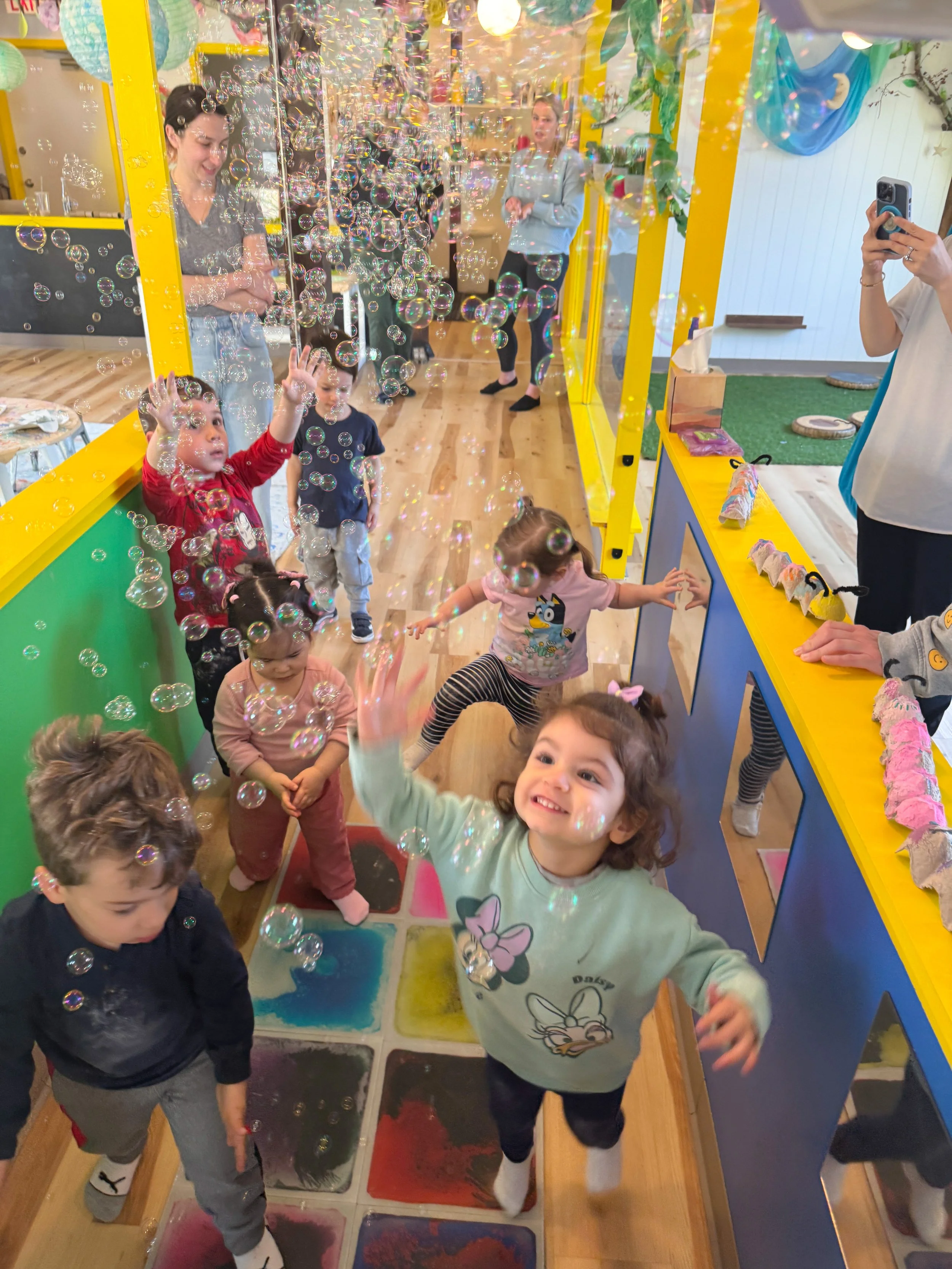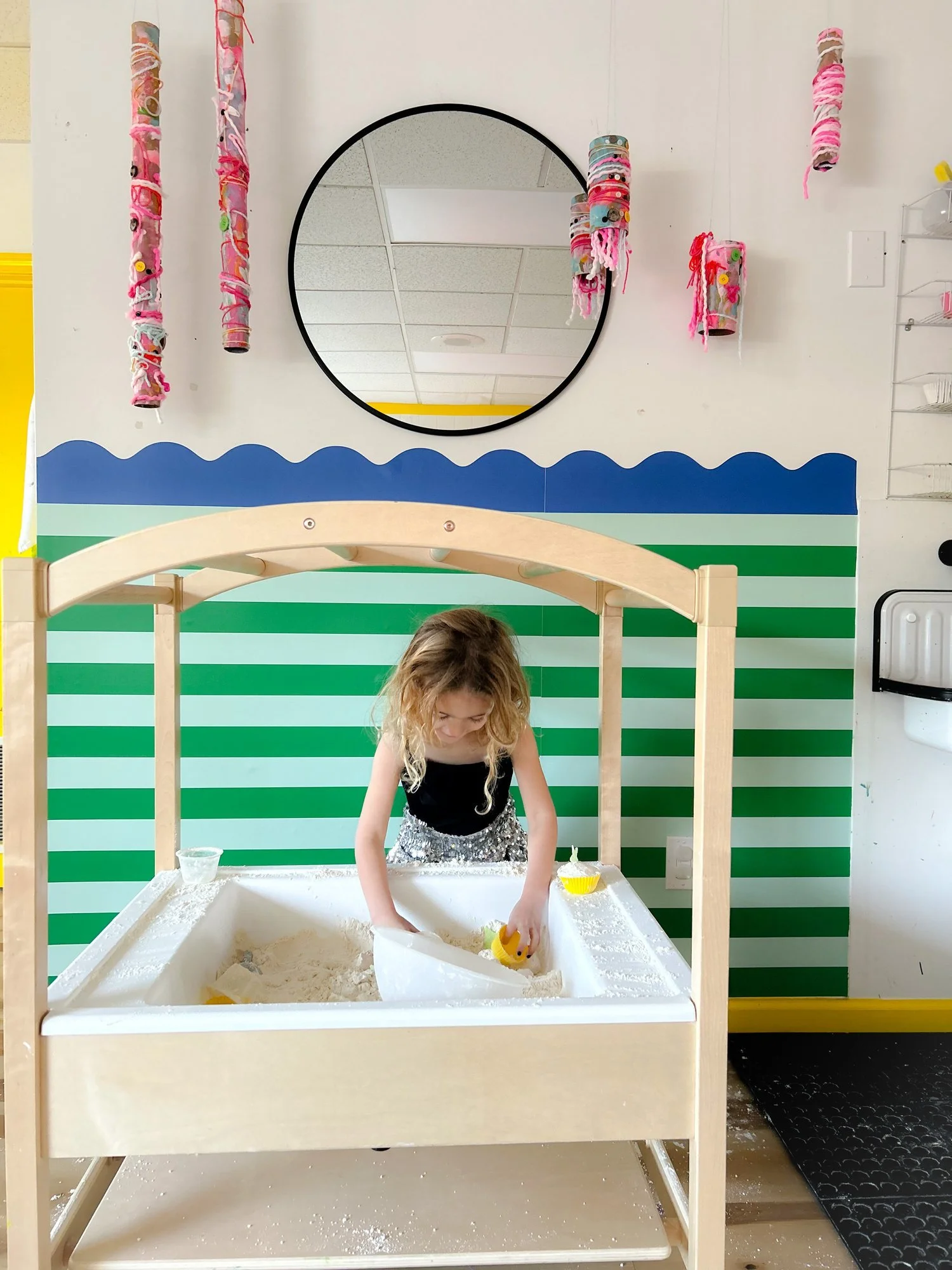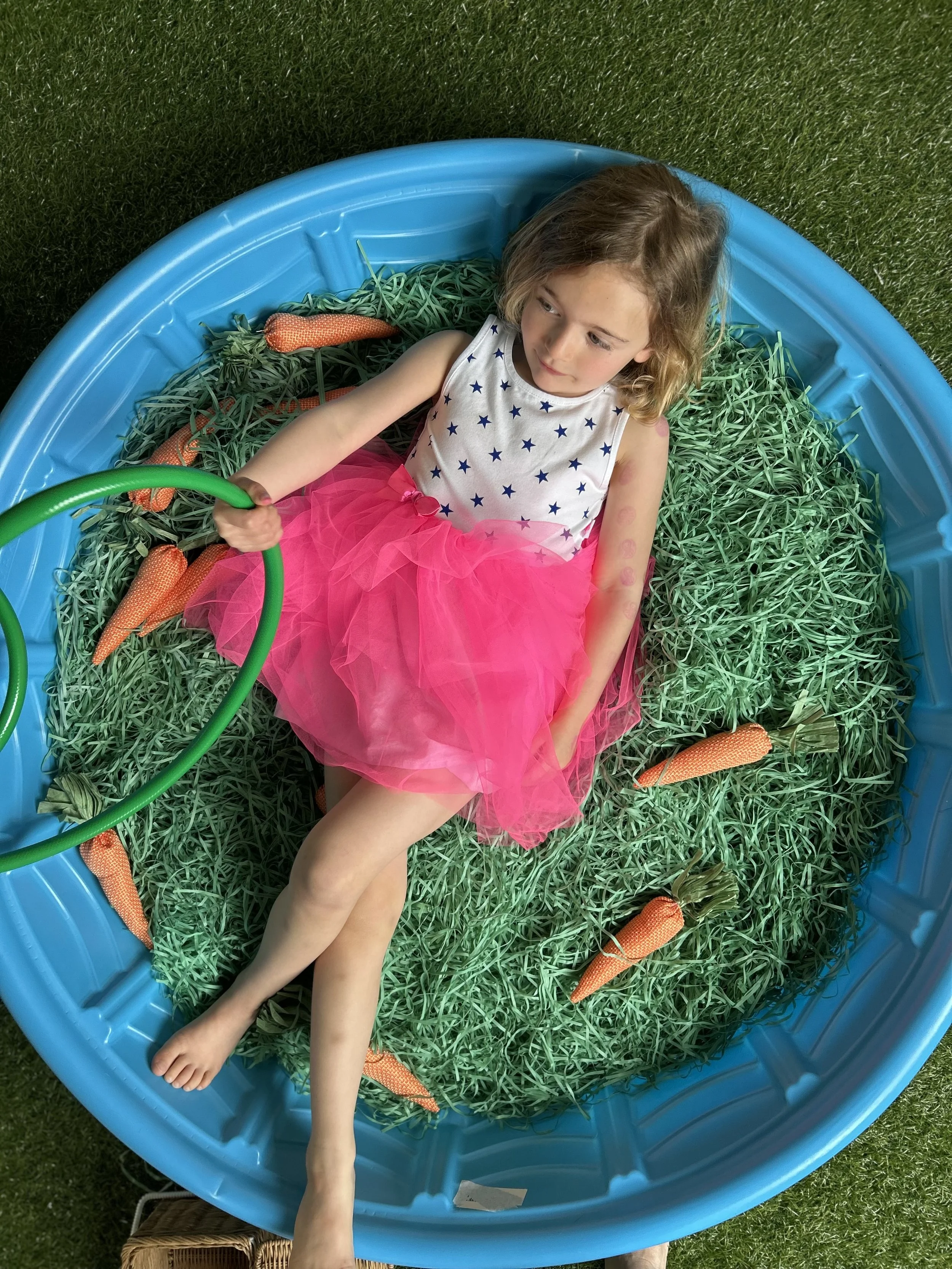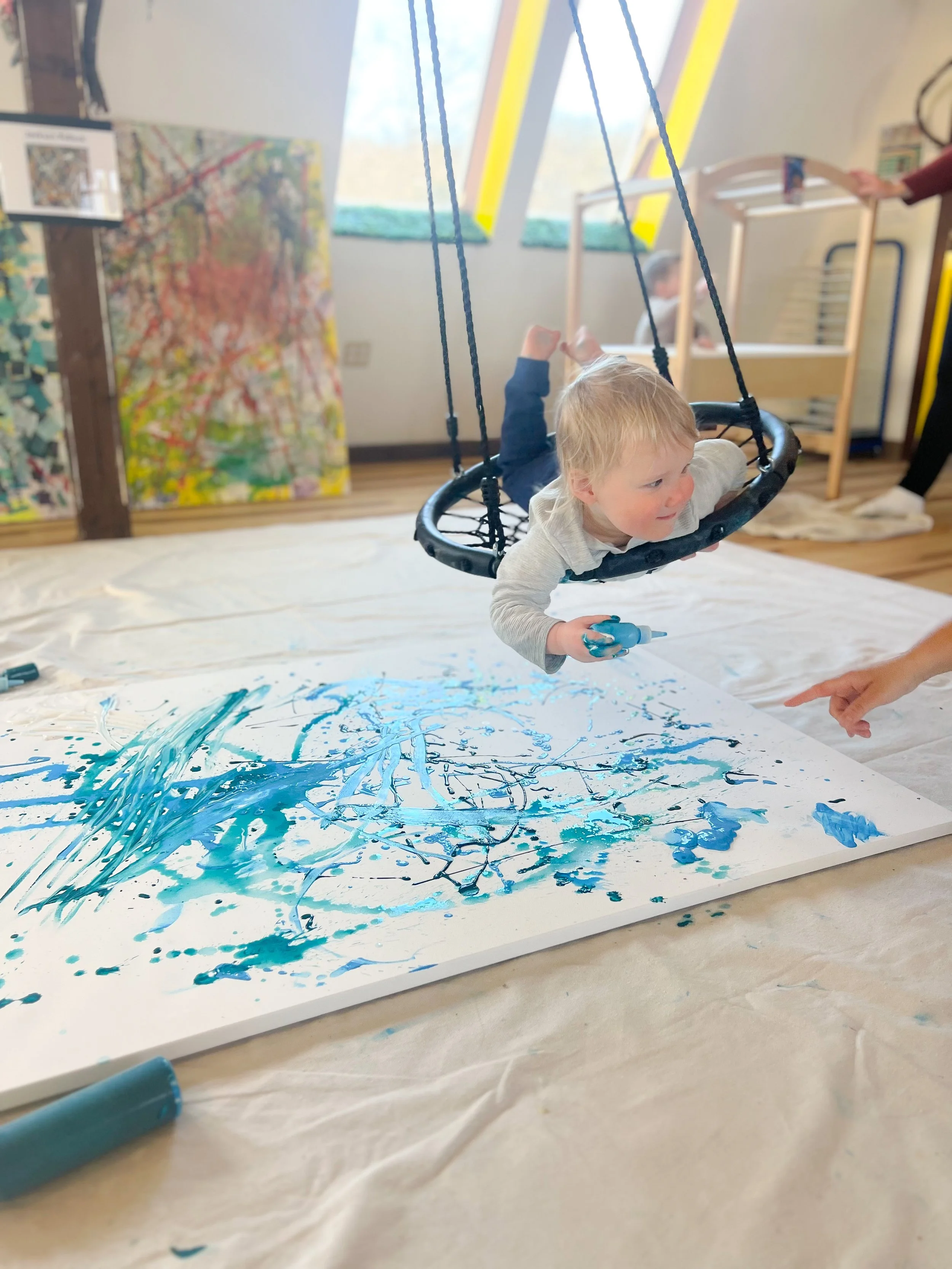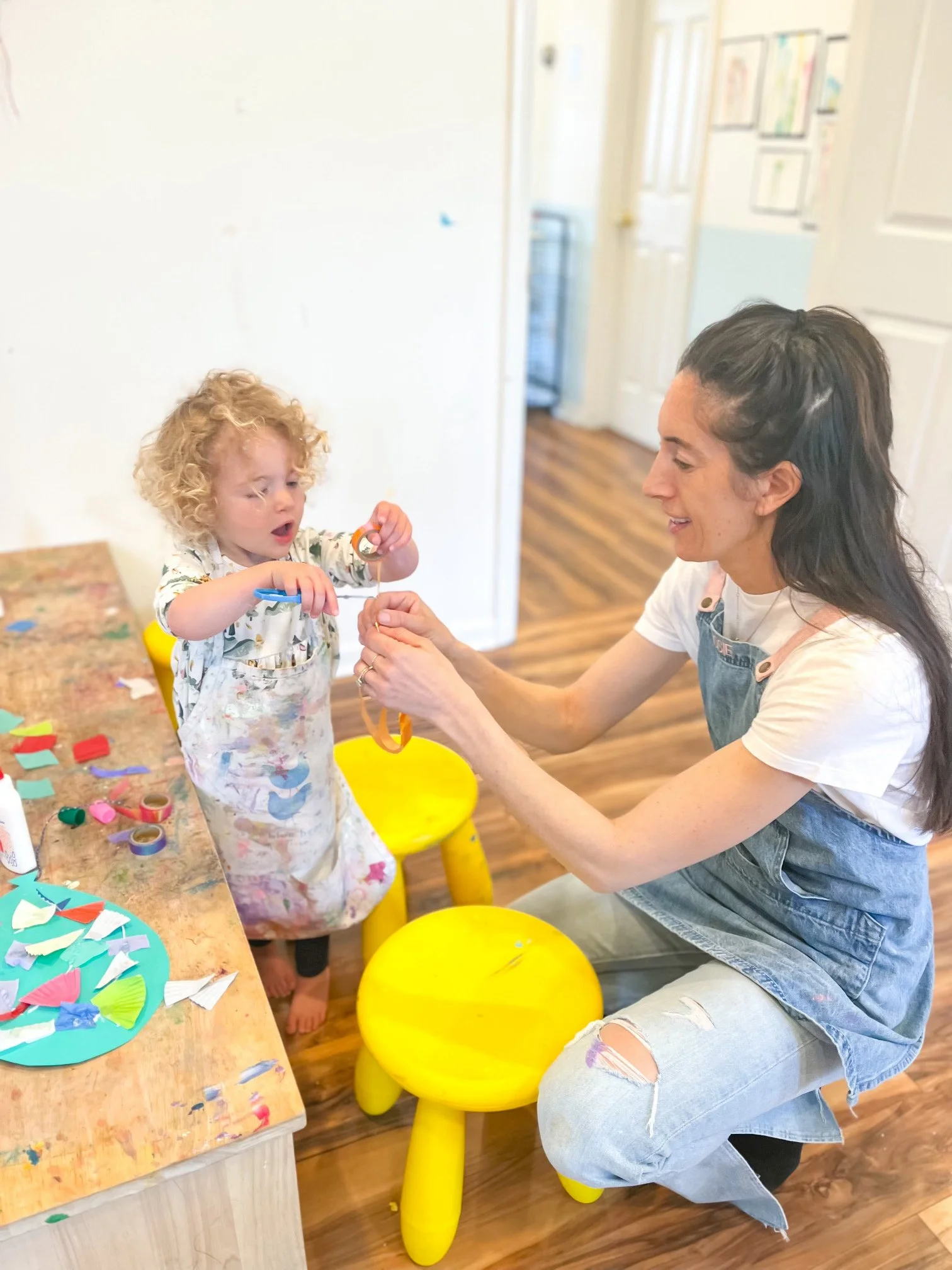How Sensory Art Supports Cognitive Development in Preschoolers
Sensory art is more than just getting messy
In the colorful world of PopArt! Kids, we witness daily how sensory art experiences transform developing minds. When a toddler plunges their hands into cool, squishy paint or a preschooler carefully arranges textured materials on canvas, they're not just creating art – they're building neural pathways that will serve them throughout life.
Sensory art offers preschoolers aged 1.5-5 years a unique opportunity to engage multiple senses simultaneously, creating rich learning experiences that traditional educational approaches often miss. For neurodivergent children especially, these multisensory pathways can unlock cognitive development in profound ways. I've seen children who normally play alone suddenly work alongside each other, sharing tools and ideas when engaged with cloud dough – this isn't just art, it's brain magic happening right before our eyes.
The Science Behind Sensory Art and Brain Development
When children squish their hands through textured materials or blend vibrant colors in our studio, something magical happens – their entire brain lights up! It's like watching fireworks of neural activity. Those little fingers exploring gooey slime or fluffy cotton aren't just getting messy – they're literally building brain architecture.
Research shows these sensory art experiences ignite development across:
The prefrontal cortex (where all the planning happens – like when a 4-year-old decides "first I need blue, THEN purple!")
The sensory cortex (processing the cool, sticky, smooth, and scratchy – all the delicious textures of creation)
The motor cortex (guiding those little hands from wild painting to increasingly precise control)
The limbic system (where joy lives when a child proudly declares "I MADE THIS!")
For preschoolers in these crucial brain-building years, this full-brain workout creates learning possibilities that flashcards and worksheets simply can't touch. I've watched countless children discover solutions to problems through sensory exploration that no amount of verbal instruction could achieve.
How Tactile Art Experiences Enhance Cognitive Function
Touch is our primal teacher – babies explore with their mouths and hands long before words enter their world. At PopArt! Kidst, we honor this bodily wisdom. When little hands plunge into cloud dough or finger paint or explore the surprising weight of clay, they're learning in their most natural language.
Problem-solving superpowers emerge right before my eyes when children discover that watercolors behave differently than markers, or when a tower of recycled materials comes crashing down. "What if I try it THIS way?" isn't just creativity – it's scientific thinking in its purest form.
Spatial reasoning transforms through hands-on creation. I've watched toddlers who initially struggled to stack two blocks eventually create their own intuitive creations and begin to understand balance and form – mathematical thinking disguised as messy play.
Memories root deeper through sensory exploration. When a child tells me six months later, "Remember those squishy soap lemon clouds?" I'm seeing evidence that multisensory learning creates more permanent neural pathways than any flashcard system ever could.
Color, Pattern, and Visual Processing Development
Art experiences rich in visual stimulation help preschoolers develop sophisticated visual processing abilities:
Color recognition becomes intuitive through repeated creative exposure. Children at our studio progress from basic color identification to understanding subtle differences in shade and tone.
Pattern recognition skills – crucial for later mathematical thinking – develop naturally as children create and observe artistic patterns. This foundation supports early literacy as well, as letter recognition relies on similar visual processing skills.
Visual-spatial awareness expands as children translate three-dimensional experiences onto two-dimensional surfaces and back again. This cognitive flexibility supports problem-solving in multiple domains.
Emotional Regulation Through Sensory Art
Perhaps one of the most powerful cognitive benefits comes through emotional development:
Self-regulation skills develop as children experience the calming effects of certain sensory art activities. The gentle resistance of clay, the flowing quality of paint, and the focused attention required in creation all support emotional regulation – a cognitive skill essential for all learning.
Emotional expression becomes possible through art before children have the verbal capacity to express complex feelings. This emotional processing supports cognitive development by freeing mental resources for learning.
Frustration tolerance increases through the natural challenges art creation presents. When a structure collapses or a material behaves unexpectedly, children develop resilience and problem-solving skills simultaneously.
Supporting Neurodivergent Learners Through Inclusive Sensory Art
For neurodivergent preschoolers, sensory art offers particularly valuable cognitive development pathways:
Sensory integration improves as children encounter multiple sensory inputs in a supportive environment. At PopArt! Kids we carefully calibrate sensory experiences to support children with various sensory processing needs.
Alternative expression pathways provide crucial communication outlets. When verbal communication presents challenges, art offers children another language to express understanding and engage with concepts.
Focus and attention develop naturally through engaging, interest-driven creative activities. Many neurodivergent children who struggle with attention in traditional learning environments can maintain extended focus during appealing sensory art experiences.
Practical Sensory Art Activities to Support Cognitive Development at Home
Want to bring some studio magic home? These simple activities pack serious developmental punch without requiring an art degree or special equipment:
Texture Treasure Collages: Raid your junk drawer! Old fabric scraps, bubble wrap from packages, tin foil, sandpaper scraps – these "treasures" become powerful learning tools when children arrange and glue them. The magic question isn't "what are you making?" but "how does that feel on your fingers?"
Kitchen Counter Perfumery Painting: Regular finger paint becomes extraordinary when you add a drop of vanilla extract, cinnamon, or lemon juice. Watch your child's face light up with the surprise of scent meeting color! These multilayered sensory experiences create connections between brain regions that strengthen learning.
Wild Art Wandering: The next time you walk through your neighborhood or a park, bring a small bag for treasures. Pinecones, interesting leaves, smooth stones – collect them and create temporary arrangements when you return home. These ephemeral creations teach that art doesn't always need permanence to have value.
Sensory Invitation Stations: Transform a corner of your home into a mini-studio by setting out a shallow bin with kinetic sand, clay, or even a mixture of cornstarch and water alongside simple tools like plastic knives, bottle caps, or natural items. Then step back – the less instruction, the more brain-building happens!
Age-Appropriate Sensory Art for Cognitive Development
Different ages benefit from specific approaches to sensory art:
For toddlers (1.5-3 years): Focus on exploration of single materials with minimal instruction. Simple finger painting, play dough exploration, and texture walks build basic sensory processing and cause-effect understanding.
For preschoolers (3-5 years): Introduce more complex sensory combinations and basic technical skills. Projects like textured printmaking, sensory bin art, and simple sculpture support developing fine motor control alongside cognitive planning.
Frequently Asked Questions About Sensory Art and Cognitive Development
How can I tell if my child is benefiting cognitively from sensory art?
Watch for that magical "flow state" – when your child is so absorbed in sensory exploration that the outside world seems to disappear. That deep concentration is the visible sign of invisible brain architecture being built! Other clues include new descriptive language ("It's squishy but also a little bit bumpy!"), approaching problems with creative solutions, or that moment when they tell YOU to wait because they're not finished yet. These are all signs that cognitive development is happening beneath the joyful mess.
My child gets overwhelmed by messy activities. Can they still benefit from sensory art?
Absolutely! At PopArt! Kids, we offer a spectrum of sensory experiences. Start with less intense sensory activities like measuring dry beans, exploring the light table or using scented playdough. Gradually introduce new sensory experiences while respecting your child's boundaries. The cognitive benefits come from engagement, not necessarily mess.
How do sensory art classes differ from regular art classes for preschoolers?
Traditional art classes often focus on product creation and specific techniques. Sensory art prioritizes the experience of materials and processes, allowing children to engage their senses fully while making discoveries. Our classes incorporate developmental understanding and follow children's natural learning pathways.
How often should my child engage in sensory art for optimal cognitive development?
Regular exposure is more important than duration. A weekly class of 45 minutes provides significant cognitive benefits. At PopArt! Kids, our classes create structured opportunities, but simple home continuation can strengthen these neural pathways.
Can sensory art help my child prepare for kindergarten?
Definitely. Sensory art builds crucial pre-academic skills including fine motor control, sustained attention, visual discrimination, sequencing abilities, and verbal concept development. These foundational cognitive skills support later academic learning more effectively than drill-based academic preparation.
At PopArt! Kids Studio in Ridgefield and Wilton, Connecticut, nestled in the beautiful southwestern Fairfield County, we've created joyful, messy paradises where every child – from sensory seekers to sensory cautious, from typically developing to neurodivergent – discovers their own unique creative voice. Our spaces hum with discovery, occasional happy shrieks, and the sound of minds expanding through fingers exploring.
Come join our community where paint sometimes ends up in hair (it washes out!), where process matters more than product, and where we celebrate when clay sculptures collapse because that means we get to problem-solve and rebuild. Our preschool art classes, toddler sensory adventures, and summer camps aren't just about making pretty things for the refrigerator – they're about growing brains and hearts through the language all children naturally speak: sensory exploration.
Your child belongs here. Their unique way of experiencing the world is welcome here. Come get messy with us!
Ready to Watch Your Child's Mind Bloom Through Art?
Every sensory art experience is a step toward confident, creative thinking. Don't wait to give your child the cognitive benefits of sensory exploration in our supportive community.
Two Studios!
Ridgefield Studio 80 Grove Street
Ridgefield, CT
rosie@popart.kids (Fairfield County) Registration
Wilton Studio 196 Danbury Road
Wilton, CT
(Fairfield County) Registration
Serving families throughout Fairfield County including Danbury, Redding, Weston, and New Canaan
Limited Spaces Available for Spring Classes!


